- Sorry, this product is unavailable.
-

Fire One! Hugh Clarke
$30.00Two true war time stories of Australia: Japanese midget submarines attacked Sydney Harbour in 1942, stunning Australia with their preparations, strategy and the aftermath - an attack that could have paved the way for the first wartime invasion in Australia's history. The greatest mass escape of prisoners-of-war in British milirtary history took place in the small country town of Cowra in 1944. The attempt was hopeless - 231 Japanese and 4 Australians were killed. Illustrated with black and white photographs. -
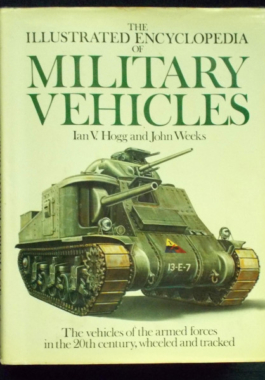 The use and development of motorised vehicles by the armed forces of the twentieth century is a complex and fascinating subject. While many books are devoted specifically to tanks, trucks and so on, this lavishly illustrated and comprehensive encyclopedia sets out to provide a complete and authoritative guide to motorised military vehicles of all categories - from the first quadricycles and armoured cars of the late nineteenth and early twentieth century to the 1980s. https://cosmiccauldronbooks.com.au/p/biography-general-george-s-patton-ian-v-hogg/
The use and development of motorised vehicles by the armed forces of the twentieth century is a complex and fascinating subject. While many books are devoted specifically to tanks, trucks and so on, this lavishly illustrated and comprehensive encyclopedia sets out to provide a complete and authoritative guide to motorised military vehicles of all categories - from the first quadricycles and armoured cars of the late nineteenth and early twentieth century to the 1980s. https://cosmiccauldronbooks.com.au/p/biography-general-george-s-patton-ian-v-hogg/ -
 As we crowded the decks off Gallipoli and watched the first shells crash into Turkish soil... Trooper Ion L. Idriess of the 5th Australian Light Horse began keeping a diary. Over the next three years as the regiment moved onto Palestine, stormed Beersheba and pushed into the Sinai, his diary grew and became one of the most vivid pieces of war narrative ever written. Unconcerned with grand strategy or moralisations, Idriess records the realities of his war - maggot-ridden trenches crowded with the corpses of his mates, the good friendships, the bad tucker, the heat, the dust, the boredom of desert patrols - and always the fighting and his reactions to it, which reveal far better than mere description, since he was there. The rifle fire grew to a roar that drowned the voice of the man next to me. I felt as a stone age man might feel if volcanoes all around him suddenly spat life and roared...Believed to be Idriess' earliest work.
As we crowded the decks off Gallipoli and watched the first shells crash into Turkish soil... Trooper Ion L. Idriess of the 5th Australian Light Horse began keeping a diary. Over the next three years as the regiment moved onto Palestine, stormed Beersheba and pushed into the Sinai, his diary grew and became one of the most vivid pieces of war narrative ever written. Unconcerned with grand strategy or moralisations, Idriess records the realities of his war - maggot-ridden trenches crowded with the corpses of his mates, the good friendships, the bad tucker, the heat, the dust, the boredom of desert patrols - and always the fighting and his reactions to it, which reveal far better than mere description, since he was there. The rifle fire grew to a roar that drowned the voice of the man next to me. I felt as a stone age man might feel if volcanoes all around him suddenly spat life and roared...Believed to be Idriess' earliest work. -
 The Von Bock memoirs allow the reader to see the entire drama of the Second World War through the eyes of one of Germany's most important military commanders. After the attacks on Poland and Western Europe, campaigns that he helped bring to a successful conclusion, Von Bock became Commander-in-Chief of Army Group Center which carried out the main drive on Moscow during Operation Barbarossa and brought the Red Army to the verge of collapse. Hitler relieved Von Bock when the German offensive bogged down during the winter of 1941/1942. After he returned as Commander-in-Chief of Army Group South, Von Bock was eventually placed in temporary 'retirement' when he critised Hitler's division of forces against Stalingrad and the Caucasus - and the road to catastrophe began. Army commanders like Hoth, Guderian, Kluge and Paulus served under Von Bock, while at his side was his nephew Henning von Tresckow, who led the most active resistance movement against Hitler, and Carl-Hans von Hardenberg, a friend and advisor of Von Stauffenberg. Their efforts to win him over to the resistance failed, yet Von Bock the pronounced resistance sentiments among his staff, and even became privy to the attempted assassination of Hitler on July 20, 1944. This book allows us to reassess Fedor Von Bock, whose complex personality is revealed by his diary entries.
The Von Bock memoirs allow the reader to see the entire drama of the Second World War through the eyes of one of Germany's most important military commanders. After the attacks on Poland and Western Europe, campaigns that he helped bring to a successful conclusion, Von Bock became Commander-in-Chief of Army Group Center which carried out the main drive on Moscow during Operation Barbarossa and brought the Red Army to the verge of collapse. Hitler relieved Von Bock when the German offensive bogged down during the winter of 1941/1942. After he returned as Commander-in-Chief of Army Group South, Von Bock was eventually placed in temporary 'retirement' when he critised Hitler's division of forces against Stalingrad and the Caucasus - and the road to catastrophe began. Army commanders like Hoth, Guderian, Kluge and Paulus served under Von Bock, while at his side was his nephew Henning von Tresckow, who led the most active resistance movement against Hitler, and Carl-Hans von Hardenberg, a friend and advisor of Von Stauffenberg. Their efforts to win him over to the resistance failed, yet Von Bock the pronounced resistance sentiments among his staff, and even became privy to the attempted assassination of Hitler on July 20, 1944. This book allows us to reassess Fedor Von Bock, whose complex personality is revealed by his diary entries. -
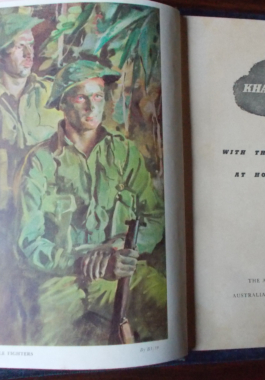
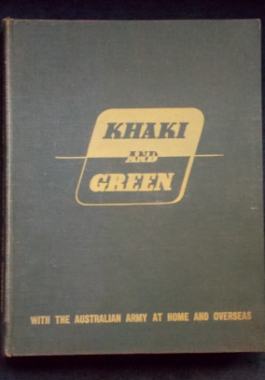
With the Australian Army at Home and Overseas. Published for the Australian Military Forces by the Australian War Memorial, Canberra, 1943. With news and information - literally - as it happened from the Middle East and the South West Pacific. Chapters and writings include: Alamein Christmas Shops; Luck and Gus; I Saw a Panzer Attack; The Log Which Wasn't; Moon Madness; Survival of the Fairest; No Mates in the Army and much more, all written by Australia's Own. With stories, yarns, cartoons, poems, fabulous colour plates, black and white illustrations and photographs. Real war history.
-
 "Learn all you can about the German Army and one day you will be a valuable man to your country." These words were spoken to young Alexander Scotalnd by Major Wade, a British liaison officer in German West Africa in 1904. He never forgot those words. This book covers how much he learnt and how valuable were his services to his country. This young man served in the German Army - at the suggestion of the Germans - for the duration of the Hottentot Rebellion, thereby gaining an intimate knowledge of the organisation and strengths of the German military machine. He grew to know, by close contact, the habits, language and mental outlook of the German soldier. This knowledge was the basis of his achievements in espionage, interrogation and undercover work in two world wars. His reputation led to a strange meeting with Adolf Hitler in 1937, at the home of a mutual friend. His career reached its zenith in 1947 when - as Chief Officer of the War Crimes Investigation Unit, he played a decisive role in bringing Nazi war criminals to justice. Illustrated with black and white photographs.
"Learn all you can about the German Army and one day you will be a valuable man to your country." These words were spoken to young Alexander Scotalnd by Major Wade, a British liaison officer in German West Africa in 1904. He never forgot those words. This book covers how much he learnt and how valuable were his services to his country. This young man served in the German Army - at the suggestion of the Germans - for the duration of the Hottentot Rebellion, thereby gaining an intimate knowledge of the organisation and strengths of the German military machine. He grew to know, by close contact, the habits, language and mental outlook of the German soldier. This knowledge was the basis of his achievements in espionage, interrogation and undercover work in two world wars. His reputation led to a strange meeting with Adolf Hitler in 1937, at the home of a mutual friend. His career reached its zenith in 1947 when - as Chief Officer of the War Crimes Investigation Unit, he played a decisive role in bringing Nazi war criminals to justice. Illustrated with black and white photographs. -
 Illustrated with over 1300 photographs, some never previously published, this military journey begins with the build up to war and the invasion of Poland to ultimate victory over Japan. Immensely readable, it brings the events and the people of those turbulent times into sharp focus for those who lived through the conflict as well as those born during the fifty years that have elapsed since the war's end.
Illustrated with over 1300 photographs, some never previously published, this military journey begins with the build up to war and the invasion of Poland to ultimate victory over Japan. Immensely readable, it brings the events and the people of those turbulent times into sharp focus for those who lived through the conflict as well as those born during the fifty years that have elapsed since the war's end. -
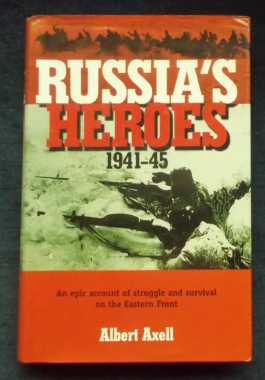 For four years in World War II, out of an unquestioned love for their mother country, the Russian people heroically defended their soil with their blood. Here is the full story of the valor of the sons and daughters, soldiers and villagers, Cossacks and snipers who battled in Moscow and Stalingrad, in the Caucasus and the Arctic, at the Brest fortress and Kursk Bulge. From the account of the aging Russian general who suffered drenchings in ice-cold water rather than collaborate with his Nazi captors to that of the nineteen-year-old private who flung himself on the gun port of a German pillbox so that his comrades could advance, these pages not only chronicle extraordinary selfless acts of heroism but also rectify an astonishing oversight in innumerable histories of World War II. With 16 pages of black-and-white photographs.
For four years in World War II, out of an unquestioned love for their mother country, the Russian people heroically defended their soil with their blood. Here is the full story of the valor of the sons and daughters, soldiers and villagers, Cossacks and snipers who battled in Moscow and Stalingrad, in the Caucasus and the Arctic, at the Brest fortress and Kursk Bulge. From the account of the aging Russian general who suffered drenchings in ice-cold water rather than collaborate with his Nazi captors to that of the nineteen-year-old private who flung himself on the gun port of a German pillbox so that his comrades could advance, these pages not only chronicle extraordinary selfless acts of heroism but also rectify an astonishing oversight in innumerable histories of World War II. With 16 pages of black-and-white photographs. -
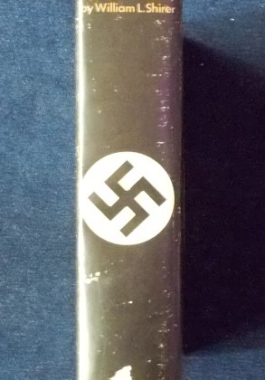
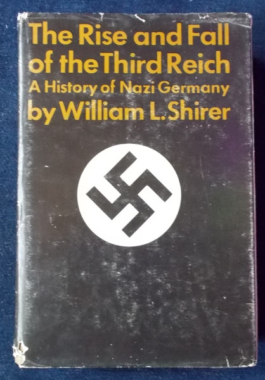
Here for the first time is the complete history of Hitler's empire. No other empire ever bequeathed to historians such mountains of evidence about its rise and fall as the Third Reich. The Allied demand for unconditional surrender produced - before the Nazis could destroy their files - an almost hour-to-hour record of the nightmare realm created by Hitler. This record includes the testimony of Nazi leaders, concentration camp inmates, the diaries of officials, transcripts of secret conferences, army orders, private letters - all the vast paper work behind a conspiracy to conquer the world. This is also the story of Hitler the man - his love affairs, his imprisonment, his suicide. There is also details of the plot to kidnap the Duke and Duchess of Windsor and hundreds of other inside stories. Most of all, it is the story of how Hitler destroyed his beloved Germany. The author, who watched and reported on the Nazis since 1925 had been reporting on-the-spot from Germany and Europe for almost forty years and spent over five years sifting the mountains of paper that eventually became this definitive history.
-
 Most dramas end in anti-climax, but not in Nazi Germany. Everything about its demise was tragic crescendo. This is a dramatic countdown of the final months of World War II in Europe, bringing to life the waning power and the ultimate submission of the Third Reich. To reconstruct the tumultuous hundred days between Yalta and the fall of Berlin, John Toland traveled more than 100,000 miles in twenty-one countries and interviewed more than six hundred people - from Hitler’s personal chauffeur to Generals von Manteuffel, Wenck, and Heinrici; from underground leaders to diplomats; from top Allied field commanders to brave young GIs. When it was first published, The Last 100 Days made history, revealing after-action reports, staff journals, and top-secret messages and personal documents previously unavailable to historians. Illustrated with black and white archival photographs.
Most dramas end in anti-climax, but not in Nazi Germany. Everything about its demise was tragic crescendo. This is a dramatic countdown of the final months of World War II in Europe, bringing to life the waning power and the ultimate submission of the Third Reich. To reconstruct the tumultuous hundred days between Yalta and the fall of Berlin, John Toland traveled more than 100,000 miles in twenty-one countries and interviewed more than six hundred people - from Hitler’s personal chauffeur to Generals von Manteuffel, Wenck, and Heinrici; from underground leaders to diplomats; from top Allied field commanders to brave young GIs. When it was first published, The Last 100 Days made history, revealing after-action reports, staff journals, and top-secret messages and personal documents previously unavailable to historians. Illustrated with black and white archival photographs. -
 The in-depth inside story of the victory in Africa and Europe by Montgomery's Chief-of-Staff. This is not just a re-telling of the battles and campaigns de Guingand fought with Montgomery, the Eighth Army and the 21st Army Group; it is also an insight into what it takes to get armies equipped and in place to achieve those victories as well as an evaluation of some of the personalities of the leadership of the Western Allies through defeat onward to victory.
The in-depth inside story of the victory in Africa and Europe by Montgomery's Chief-of-Staff. This is not just a re-telling of the battles and campaigns de Guingand fought with Montgomery, the Eighth Army and the 21st Army Group; it is also an insight into what it takes to get armies equipped and in place to achieve those victories as well as an evaluation of some of the personalities of the leadership of the Western Allies through defeat onward to victory. -
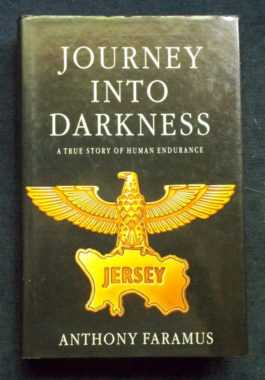 By 194o, the isle of Jersey was well and truly under the Nazi jackboot. The legitimate authorities collaborated with the occupying power. For islander Anthony Faramus, this would have horrific consequences. When the local police reported him to the Germs for possession of a British leaflet, Faramus was jailed for one month. Then the Jersey authorities prosecuted him for defrauding his employer of 90 Occupational Marks. His employer was the collaborationist state, which put him to work in a motel commandeered by the Germans. This time he got six months' hard labour. Shortly after his release, Faramus was sent to Occupied France as a political prisoner. The authorities had sent young Anthony Faramus on the first stage of a journey into the dark heart of Nazi tyranny - but to begin with, imprisonment in France's Fort de R9omainville was surprisingly enjoyable, with fellow prisoners, men and women, from a fascinating cross-section of society. But after Romainville came selections... transports...and the death camps of Buchenwald and Mauthausen...
By 194o, the isle of Jersey was well and truly under the Nazi jackboot. The legitimate authorities collaborated with the occupying power. For islander Anthony Faramus, this would have horrific consequences. When the local police reported him to the Germs for possession of a British leaflet, Faramus was jailed for one month. Then the Jersey authorities prosecuted him for defrauding his employer of 90 Occupational Marks. His employer was the collaborationist state, which put him to work in a motel commandeered by the Germans. This time he got six months' hard labour. Shortly after his release, Faramus was sent to Occupied France as a political prisoner. The authorities had sent young Anthony Faramus on the first stage of a journey into the dark heart of Nazi tyranny - but to begin with, imprisonment in France's Fort de R9omainville was surprisingly enjoyable, with fellow prisoners, men and women, from a fascinating cross-section of society. But after Romainville came selections... transports...and the death camps of Buchenwald and Mauthausen... -
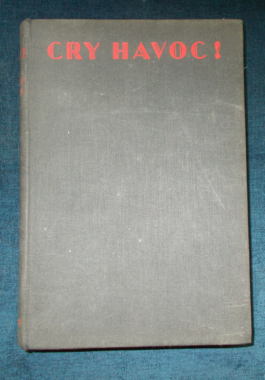
Cry Havoc! Beverley Nichols
$45.00Written in 1933, this book caused furor in many quarters. It's a far cry from Nichols' usual light-hearted badinage, being a bitter denunciation of the world's attitude toward peace and war and a thorough research into the activities of offensive preparations going on in the armament factories in England and on the Continent. It also covers the ineffectual preparations being made for defensive measures. Faced with the fact that war was brewing, the League of Nations was rendered virtually impotent through the media of the day and public opinion and that the civilian population is certain to be the victim in the next European War, his findings are far from negligible. The last half of the book is a succession of challenging dialogues, in which socialism, capitalism, militarism and pacifism are all given ardent advocates. Time and events demonstrated that Nichols predicted how World War II would proceed with uncanny 99% accuracy. -
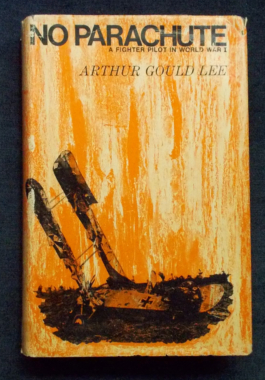 Arthur Gould Lee, who retired as an RAF air vice marshal, had the privilege of recording his feelings and actions during World War I in his letters home and what's more, his letters survived. A courageous 22-year-old, devoted to duty and well aware of the hazards he faced on the Western Front, Lee was more mature than most of his colleagues, in part by virtue of being married and in part because he had had the good fortune to have crashed during training, allowing him to log more hours of flight training than the average replacement pilot. He didn’t like the fact that the Germans had superior aircraft, and noted the qualitative differences in opposing Albatross D.Is, D.IIs and D.IIIs, the latter dubbed the “V-strutter” and carrying two machine guns to the single one carried by the Sopwith Pup. He writes about flying through a shell-laden sky, vulnerable to bullets from above and below. He never forgot the RFC's needless sacrifices and examines the failure of the Army High Command to provide efficient planes until mid-1917 and parachutes throughout the entire war. With black and white photos.
Arthur Gould Lee, who retired as an RAF air vice marshal, had the privilege of recording his feelings and actions during World War I in his letters home and what's more, his letters survived. A courageous 22-year-old, devoted to duty and well aware of the hazards he faced on the Western Front, Lee was more mature than most of his colleagues, in part by virtue of being married and in part because he had had the good fortune to have crashed during training, allowing him to log more hours of flight training than the average replacement pilot. He didn’t like the fact that the Germans had superior aircraft, and noted the qualitative differences in opposing Albatross D.Is, D.IIs and D.IIIs, the latter dubbed the “V-strutter” and carrying two machine guns to the single one carried by the Sopwith Pup. He writes about flying through a shell-laden sky, vulnerable to bullets from above and below. He never forgot the RFC's needless sacrifices and examines the failure of the Army High Command to provide efficient planes until mid-1917 and parachutes throughout the entire war. With black and white photos. -
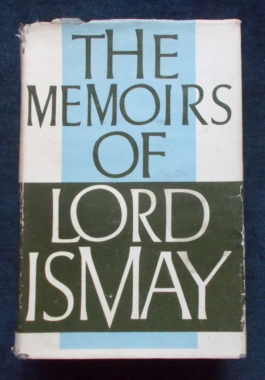 The appointment of Major-General H.L. Ismay to the Chiefs of Staff Committee was made on May 1st, 1940, when Churchill was First Lord of the Admiralty. On May 10th he succeeded Chamberlain as Prime Minister and Ismay's position at once became of the first importance. His functions were ill defined. He liked to call himself Churchill's "agent"; but he was very much more than that term usually implies. Out of his close association with the Prime Minister there grew a deep understanding and friendship. Accompanying him everywhere from blitzed areas in London to major conferences all over the world, or sharing with him his moments of relaxation after the heat of the day, Ismay had unique opportunities to observe the Colossus who was his master and his memoir paints a full portrait of Churchill. In 1925 Ismay was appointed Assistant Secretary to the Committee of Imperial defence. By the outbreak of the Second World War he was very experienced in committee work. The waging of total war in a democracy is a complex business: committees and conferences have to do their work, temperaments have to be reconciled and methods of implementing decisions arrived at. It is this aspect of the war covered by Lord Ismay. He was important as a peacemaker and mediator; there was no lack of potential friction between the Chiefs of Staff and their political superiors in World War II and the fact that this friction remained largely potential was largely due to Ismay. After his years in India, Somaliland and Whitehall and his work in World War II, he returned post-war to India as the personally invited advisor to the Viceroy, Lord Mountbatten, to contribute to the settlement of Partition, and after its successful conclusion Lord Ismay crowned his career of public service as the head of the North Atlantic Treaty Organization (NATO) where he strove to prevent a future war with the same energy as he had helped to win the past one.
The appointment of Major-General H.L. Ismay to the Chiefs of Staff Committee was made on May 1st, 1940, when Churchill was First Lord of the Admiralty. On May 10th he succeeded Chamberlain as Prime Minister and Ismay's position at once became of the first importance. His functions were ill defined. He liked to call himself Churchill's "agent"; but he was very much more than that term usually implies. Out of his close association with the Prime Minister there grew a deep understanding and friendship. Accompanying him everywhere from blitzed areas in London to major conferences all over the world, or sharing with him his moments of relaxation after the heat of the day, Ismay had unique opportunities to observe the Colossus who was his master and his memoir paints a full portrait of Churchill. In 1925 Ismay was appointed Assistant Secretary to the Committee of Imperial defence. By the outbreak of the Second World War he was very experienced in committee work. The waging of total war in a democracy is a complex business: committees and conferences have to do their work, temperaments have to be reconciled and methods of implementing decisions arrived at. It is this aspect of the war covered by Lord Ismay. He was important as a peacemaker and mediator; there was no lack of potential friction between the Chiefs of Staff and their political superiors in World War II and the fact that this friction remained largely potential was largely due to Ismay. After his years in India, Somaliland and Whitehall and his work in World War II, he returned post-war to India as the personally invited advisor to the Viceroy, Lord Mountbatten, to contribute to the settlement of Partition, and after its successful conclusion Lord Ismay crowned his career of public service as the head of the North Atlantic Treaty Organization (NATO) where he strove to prevent a future war with the same energy as he had helped to win the past one. -

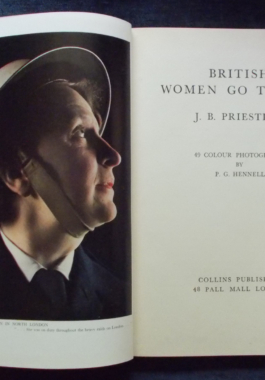 An on-the-spot record of what the women of England were doing in World War II : The land army, civil defence, munitions, communications, the home war effort and the domestic and economic consequences of women doing jobs that had been in the traditional male domain. Full of handsome colour plates by P.C. Hennel showing this band of determined women: servicing guns on a torpedo boat, dispatch riding, changing sparking plugs on a training aircraft, handling the barrage balloon, fitting the cowling to the motor of a Halifax bomber and extinguishing an explosive incendiary bomb. A real piece of history.
An on-the-spot record of what the women of England were doing in World War II : The land army, civil defence, munitions, communications, the home war effort and the domestic and economic consequences of women doing jobs that had been in the traditional male domain. Full of handsome colour plates by P.C. Hennel showing this band of determined women: servicing guns on a torpedo boat, dispatch riding, changing sparking plugs on a training aircraft, handling the barrage balloon, fitting the cowling to the motor of a Halifax bomber and extinguishing an explosive incendiary bomb. A real piece of history. -

 Blitzkrieg: Traces the origins of the war starting with the Armistice at Compiègne in 1919, covering the rise of totalitarianism in Europe, the first terrible months of the Blitzkrieg, the imperialistic aggression of Japan in the Far East, the period of Allied appeasement, the evacuation of Dunkirk and the fall of France. Siege: Begins with the dogged and courageous stand of the British against the onslaught of the Nazi war machine, the war in the North Atlantic and Mediterranean, the invasion of the Balkans and Greece, the harsh and brutal war in the North African desert, the suicidal German attack on Russia, the cruelty of the winter war and the attack on Pearl Harbour. Counterattack: The initial period of the Axis reversals and the first steps on the Allied road to victory; the three great turning points of the war ( Stalingrad, Midway and El Alamein) Rome has fallen; the Nazis are reeling under the Russian counter-offensive and the first of the costly, bloody Pacific campaigns. Victory: The last stages of the war in both the European and Pacific theatres; the Allied landing on the beaches of Normandy, the battle of France, the Red Army offensive, the Yalta conference and the capitulation of the Third Reich, concluding with the bitter Pacific Island campaigns, MacArthur's retrurn to the Philippines, the dropping of the atomic bomb and Japan's surrender. Each volume contains rare photographs; over four volumes, 500 photographs and 100,000 words.
Blitzkrieg: Traces the origins of the war starting with the Armistice at Compiègne in 1919, covering the rise of totalitarianism in Europe, the first terrible months of the Blitzkrieg, the imperialistic aggression of Japan in the Far East, the period of Allied appeasement, the evacuation of Dunkirk and the fall of France. Siege: Begins with the dogged and courageous stand of the British against the onslaught of the Nazi war machine, the war in the North Atlantic and Mediterranean, the invasion of the Balkans and Greece, the harsh and brutal war in the North African desert, the suicidal German attack on Russia, the cruelty of the winter war and the attack on Pearl Harbour. Counterattack: The initial period of the Axis reversals and the first steps on the Allied road to victory; the three great turning points of the war ( Stalingrad, Midway and El Alamein) Rome has fallen; the Nazis are reeling under the Russian counter-offensive and the first of the costly, bloody Pacific campaigns. Victory: The last stages of the war in both the European and Pacific theatres; the Allied landing on the beaches of Normandy, the battle of France, the Red Army offensive, the Yalta conference and the capitulation of the Third Reich, concluding with the bitter Pacific Island campaigns, MacArthur's retrurn to the Philippines, the dropping of the atomic bomb and Japan's surrender. Each volume contains rare photographs; over four volumes, 500 photographs and 100,000 words. -
 New Zealand's most famous RAF pilot saw action from the Munich Crisis to the invasion of France in 1944. Deere experienced the drama of the early days of the Battle of Britain while serving with Spitfire squadrons based at Hornchurch and Manston, and his compelling story tells of the successes and frustrations of those critical weeks. Deere's nine lives are the accounts of his fantastic luck in escaping from seemingly impossible situations. During the Battle of Britain he parachuted from stricken aircraft on three occasions and once was blown up by a bomb while taking off from Hornchurch during an attack on the airfield. In March 1943 Deere was appointed Wing Commander of the famous Biggin Hill Wing and by the end of the war, his distinguished 'score' was destroyed - twenty-two; 'probables' - ten and damaged - eighteen. Illustrated with black and white photographs.
New Zealand's most famous RAF pilot saw action from the Munich Crisis to the invasion of France in 1944. Deere experienced the drama of the early days of the Battle of Britain while serving with Spitfire squadrons based at Hornchurch and Manston, and his compelling story tells of the successes and frustrations of those critical weeks. Deere's nine lives are the accounts of his fantastic luck in escaping from seemingly impossible situations. During the Battle of Britain he parachuted from stricken aircraft on three occasions and once was blown up by a bomb while taking off from Hornchurch during an attack on the airfield. In March 1943 Deere was appointed Wing Commander of the famous Biggin Hill Wing and by the end of the war, his distinguished 'score' was destroyed - twenty-two; 'probables' - ten and damaged - eighteen. Illustrated with black and white photographs. -

 Frank Dell's experience as a Second World War pilot with the Royal Air Force's Light Night Striking Force took an even more dramatic turn when his Mosquito was shot down over Germany on the night of 14/15 October 1944. Frank recounts his escape from the disintegrating aircraft, his descent by parachute, and how, battered and bruised, he finds himself in a field adjacent to a German V2 rocket launch pad. Determined to avoid capture Frank crosses Nazi Germany and finds refuge in Holland with a Dutch Resistance group. A schoolboy when the conflict broke out, Frank Dell's extraordinary war takes him from a Home Guard unit defending the English coast against enemy invasion in 1940, to a tragic incident leading to the execution of Dutch civilians only weeks before the end of the hostilities. Frank's observant eye gives insight into what it is like to train and fly operationally with RAF Bomber Command, followed by the even greater challenges he confronts as he narrowly escapes capture while on the run from the Germans.
Frank Dell's experience as a Second World War pilot with the Royal Air Force's Light Night Striking Force took an even more dramatic turn when his Mosquito was shot down over Germany on the night of 14/15 October 1944. Frank recounts his escape from the disintegrating aircraft, his descent by parachute, and how, battered and bruised, he finds himself in a field adjacent to a German V2 rocket launch pad. Determined to avoid capture Frank crosses Nazi Germany and finds refuge in Holland with a Dutch Resistance group. A schoolboy when the conflict broke out, Frank Dell's extraordinary war takes him from a Home Guard unit defending the English coast against enemy invasion in 1940, to a tragic incident leading to the execution of Dutch civilians only weeks before the end of the hostilities. Frank's observant eye gives insight into what it is like to train and fly operationally with RAF Bomber Command, followed by the even greater challenges he confronts as he narrowly escapes capture while on the run from the Germans. -

The Holy Fox: Andrew Roberts
$95.00The life of Lord Halifax, remembered as the architect of the policy of achievement of Nazi Germany. His meeting with Hitler in 1937 was a milestone in appeasement yet just days before the 1938 Munich conference, Halifax repudiated the policy and demanded the destruction of Nazism. By May 1940, it was he rather than Churchill who was the choice for Britain's war leader. His public life also included Viceroy of India from 1926 - 31 and a deal with Gandhi that ended the Civil Disobedience campaign before it could force the British to quit.












